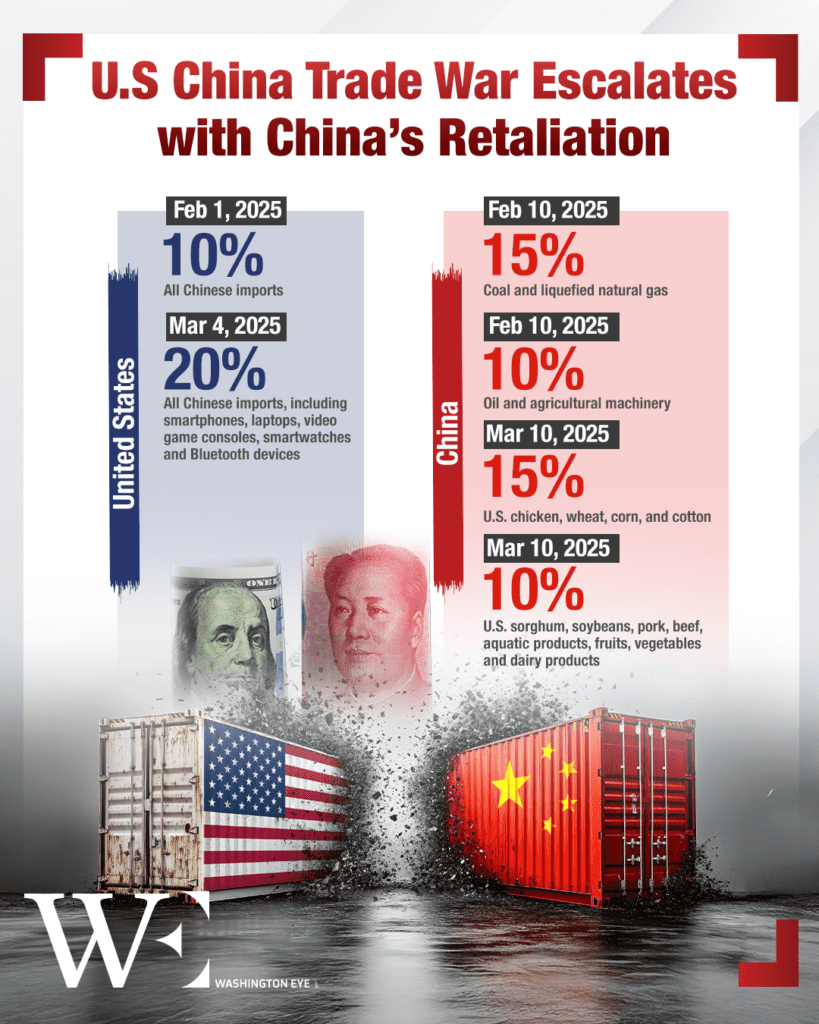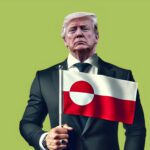The latest round of tariffs imposed by the Trump administration has reignited economic tensions between the United States and China, drawing comparisons to the 2018-2019 trade war. Now, history seems to be repeating itself as Beijing responds forcefully to Washington’s renewed tariff hikes, fueling uncertainty in global markets and supply chains.
U.S. Tariffs and Their Justification
On March 4, 2025, the U.S. government implemented a significant tariff hike on Chinese imports, increasing duties from 10% to 20% on a wide range of goods, including technology products, steel, and certain consumer goods. The administration framed the decision as an effort to curb what it claims are unfair trade practices and national security concerns linked to Chinese exports. The White House also pointed to ongoing issues such as the fentanyl crisis, asserting that stricter economic pressure on China was necessary to push Beijing into stronger anti-drug trafficking enforcement.
China Retaliates
In direct response to the new tariffs, China swiftly introduced its own countermeasures, imposing additional tariffs ranging from 10% to 15% on key U.S. exports such as soybeans, pork, and industrial machinery.
Beijing also placed new restrictions on select U.S. firms operating in China, citing national security risks and economic self-sufficiency goals. Furthermore, China announced that it had blacklisted multiple U.S. companies, restricting their ability to do business in the country as part of a broader effort to counteract what it described as “economic coercion” by Washington.
Companies like Google have come under scrutiny, with the Chinese government initiating an antitrust investigation against them. Additionally, companies like Illumina and PVH Corp. have been added to China’s “Unreliable Entity List,” which could significantly hamper their business operations within Chin
Among the blacklisted companies are major players in the defense, semiconductor, and technology sectors, including Lockheed Martin, Northrop Grumman, and Micron Technology. These firms, which have long been involved in U.S. military contracts and semiconductor production, are now barred from engaging in trade and investment activities with Chinese firms. The sanctions are expected to have wide-ranging consequences, particularly for the semiconductor industry, which heavily relies on Chinese manufacturing and raw materials. Additionally, restrictions on Boeing, one of the largest U.S. exporters to China, could further strain commercial aviation supply chains. The move signals Beijing’s intent to push back against U.S. economic pressure by directly targeting key sectors of American industry that depend on Chinese partnerships and markets.
Economic and Market Reactions
The immediate fallout of the tariff escalation was evident in global financial markets. The Dow Jones Industrial Average dropped over 2% as investors reacted to concerns about a prolonged U.S.-China trade standoff. Analysts noted that the U.S. semiconductor sector, which is already dealing with supply chain vulnerabilities, saw sharp declines in stock values following news of China’s blacklist of Micron Technology and other chip manufacturers. Shares of Boeing also fell, as investors worried about potential disruptions to aircraft sales and supply chain bottlenecks caused by Chinese sanctions.
Beyond the stock market, manufacturing and technology sectors expressed growing concerns about long-term supply chain instability. Industry leaders warned that restrictions on semiconductor firms and aerospace manufacturers could further exacerbate ongoing chip shortages and delay production timelines for various high-tech products.
Meanwhile, agricultural producers braced for further economic fallout, recalling how China’s past retaliation against U.S. farm exports had severely impacted rural economies during the 2018-2019 trade war.
A Final Note
The latest round of tariffs between the U.S. and China evokes memories of the trade war under Trump’s first term, when a similar cycle of tariffs and countermeasures led to severe economic consequences, particularly for American farmers. During that period, China responded by halting purchases of U.S. soybeans, devastating Midwest agriculture and forcing Washington to introduce billions of dollars in farm subsidies to mitigate the damage. Manufacturing industries also suffered as supply chain disruptions drove up costs.
Now, with another round of tariffs in place, fears are growing that history may repeat itself, with businesses, workers, and consumers once again caught in the crossfire of escalating trade tensions.
















